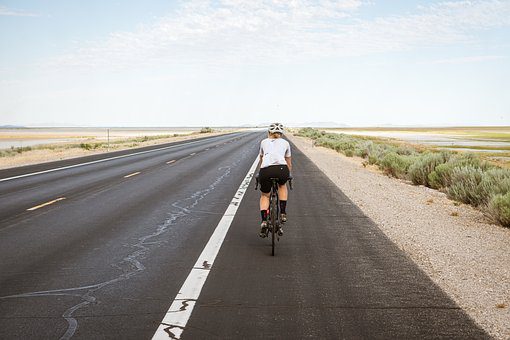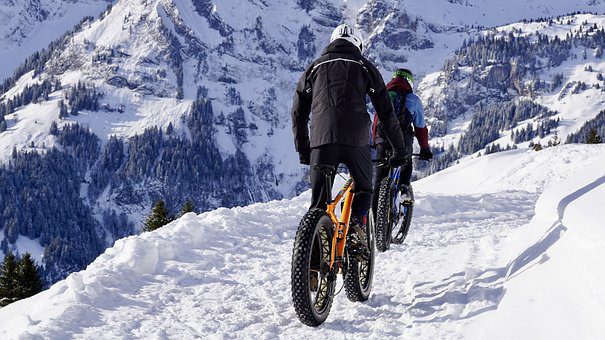As we enter springtime and Coloradans enjoy long-awaited reprieves from cold snaps, windshield wiper scraping, 6 AM shoveling, and chilled-to-the-bone cold best remedied by hot toddies or ginger tea, bicycles make their initial forays into the outdoors after months-long garage storage.
From April to November (with 50+ degree temperatures interspersed during the winter months like oases in the Atacama), Colorado’s cycling culture reaches a fever pitch, enveloping workday commuters and ironman retirees alike.
As more and more cyclists take to the road, cyclists and motorists alike may be left pondering: what are the rules of the road? In the spirit of changing seasons, we’ve compiled a list of frequently asked questions to cover everything you need to know about Colorado Bicycle Laws and best practices.
Q: Must bicycles stop at stop signs and red lights?
A: Not anymore! According to HB22-1028 Statewide Regulation of Controlled Intersections (AKA Colorado Safety Stop Law), cyclists may slow to a “reasonable” speed (think 10 mph) and proceed through an intersection if the coast is clear of oncoming traffic. On the surface this might sound unsafe, but if you’ve ever cycled in an urban environment, you know how dangerous it can be for cyclists to always observe traffic lights and stop signs.
As a wise man once said, however, with great power comes great responsibility. Cyclists are obliged to yield to oncoming traffic, so don’t think of the Colorado Safety Stop Law as free-reign for bombing down city streets with reckless abandon. Nevertheless, Colorado passing progressive legislation for non-motorists is a breath of fresh air. Get out and ride! 
Q: Can you ride a bike on the sidewalk in Colorado?
A: Yes, but Colorado bicyclists are also required to always yield to pedestrians. So, if you enter into the sidewalk because the road’s shoulder is too narrow for your bike and you encounter oncoming pedestrians, it’s probably a good idea to get off your bike and walk (wider paths like Cherry Creek Trail are exceptions to the rule).
That said, CDOT (Colorado Department of Transportation) does not explicitly prohibit cycling on sidewalks. Use your best judgment when traveling in pedestrian-predominant spaces, and don’t give cyclists a bad reputation!
Q: What are Colorado’s bike helmet laws?
A: Currently, the only situation in which Colorado cyclists are required to wear a helmet is when riding an electric bicycle. That said, it is still always a good idea to wear a helmet when cycling, as most cyclist deaths are the result of severe head injuries.
Q: What is the “Two Abreast Rule”?
A: This specific verbiage may not have been on your mind, but it’s still worth covering. According to Colorado Statute 42-4-1412, “persons operating bicycles on roadways shall ride single file; except that riding no more than two abreast is permitted in the lowing circumstances: when there is no motor vehicle traffic approaching from the rear within a distance of three hundred feet…when riding on paths or parts of roadways set aside for the exclusive use of bicycles.”
In other words, motorists must follow the “Three-Foot Rule”, maintaining a minimum of three feet between their cars and cyclists when passing to the cyclist’s left. If you’re embarking on an after-work ride with your friend, you may only ride alongside each other if the street behind you is clear of motor vehicle traffic, or if you’re riding on a designated bike trail like Clear Creek.
Motorists are responsible to bear the “Share the Road” adage in mind, but if you and your buddy are blocking off the entire right lane on your bikes, motorists are right to honk and wag their fingers at you. Moreover, drafting with other riders can reduce pedaling effort by 30-40 percent, so you’ll ride faster and safer if you stick to single file.
Q: When are motorists permitted to pass cyclists in the same lane?
A: Everyone has encountered bogged-down traffic due to a lead driver’s refusal to pass a cyclist in a narrow stretch of road. As frustrating as these moments may be, no cyclist wants to sustain a season-ending injury due to a hasty driver clipping their back tire and launching the rider over the bars and into an asphalt landing.
In order to keep everyone safe, Colorado Revised Statutes Title 42 outlines specific criteria for passing cyclists in the same lane. “A driver shall not pass a bicyclist moving in the same direction and in the same lane where there is oncoming traffic unless the driver can simultaneously: (a) allow oncoming vehicles at least one-half of the main-traveled portion of the roadway and (b) allow the bicyclist at least a three-foot separation between the right side of the driver’s vehicle.” For motorists, a wider berth between the car and the cyclist is best whenever possible.
Q: What is a “Vulnerable Road User” and are they legally protected?
A: “Vulnerable Road User” is an umbrella term used to describe myriad non-motorists. Here are some of the more common examples:
- Pedestrians;
- Roadway workers;
- Electric Scooter users;
- A person riding or leading an animal; (more likely to spot in Pennsylvania Amish country than Denver)
- Emergency services workers.
A person driving a motor vehicle whose actions are the proximate cause of serious bodily injury to a vulnerable road user may be subject to the following penalties: (per Colorado Revised Statutes Title 42-4-1601(4)(b))
- A Class 1 traffic misdemeanor in the event of serious bodily injury to a road user.
- A court-mandated driver improvement course.
- License suspension.
- In extreme cases, a civil lawsuit filed by the injured party.
The above legal ramifications may ring intuitive, but motorists often only consider what will happen in the event they cause an accident with another car. They’re less likely to consider what happens when one strikes a pedestrian, a late-night Lime scooterist (forgive me), or a cyclist. Ultimately, the safety of all road users is of paramount importance. No matter how important your work meeting or dinner reservation may appear amid a pressurized deadline, car-on-vulnerable-road-user wrecks should be avoided at all costs.
If you are a victim of a bicycle accident of any form, contact the expert personal injury attorneys at Rocky Mountain Personal Injury Lawyers today for a free consultation.


